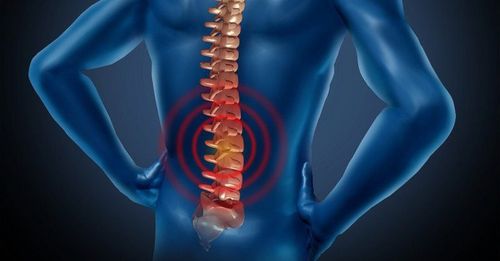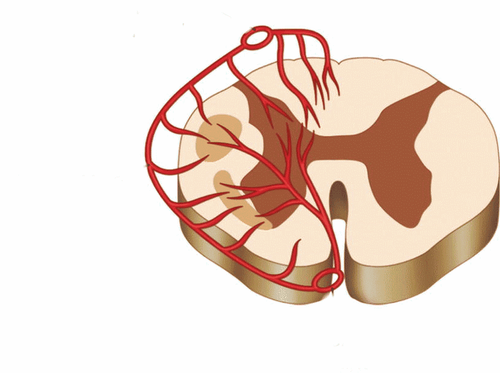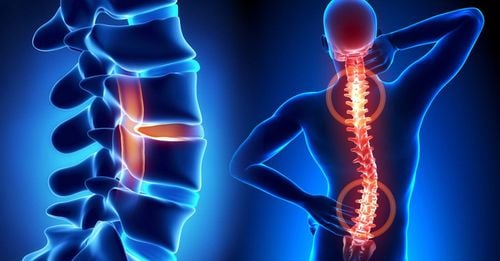This is an automatically translated article.
Spinal cord injuries are usually classified as complete or incomplete. Among them, incomplete spinal cord injury is the most common, when some signals can still be transmitted, the patient can still function in some range of motion but it is difficult to predict. Complete spinal cord injury is usually caused by an accident that cuts or separates spinal nerves, completely blocking nerve impulses from traveling in the spinal cord, making it impossible for the patient to move the affected part even a little. .1. Types of paralysis
With many types of spinal cord injury, there are many types of paralysis associated with it, below we will explore the four main types of paralysis that are classified based on the part of the body affected.1.1 Paralysis of a limb This form of paralysis usually occurs in a single body part, most commonly a paralysis of a limb, such as in the 2016 study by Dr. Pankowski and other researchers of the case. A female patient experienced transient unilateral paralysis of the right lower extremity.
As in this case, paralysis of a limb is usually short-term, especially when the person suffers from a stroke or brain injury, where the nerves are affected but avoids being completely cut off. Paralyzed limb function can be restored with rehabilitation physiotherapy.
1.2 Hemiplegia Almost like paralysis of a limb, cerebral palsy is the most common cause of hemiplegia. This form of paralysis occurs as a result of brain damage, which can be congenital or acquired.
People with this form of paralysis are often unable to move an arm, a leg, and half of the face on the same side to varying degrees. Many people experience several stages of hemiplegia, which begin with a stinging sensation, progress to myasthenia gravis and then escalate to complete paralysis.
According to researchers, arms are often affected more severely than legs and face, although patients can still walk normally despite being paralyzed in one arm. And similar to paraplegia, the severity of this form of paralysis can vary from day to day, and is highly dependent on lifestyle.
Inspirational speaker Irene Fischer – who suffered from hemiplegia in 2009 after suffering a traumatic brain injury, has inspired sharing from her experiences with the condition.
Hemiplegia can be confused with its precursor - hemiplegia. Although these conditions are completely different, the most important thing to do if you feel weak on one side of your body is to get medical help right away.
1.3 Paralysis of the lower limbs This form of paralysis occurs in the lower extremities, from the waist down, including the legs, hips and also functions such as physiology and excretion. Each patient has a different perception of this paralysis, even though it is the same loss of control and sensation from the waist down.
Although active physical therapy and rehabilitation therapies can increase muscle strength and nerve connections, it is often difficult for people to recover from lower extremity paralysis. The most common cause of lower extremity paralysis is damage to the spinal cord, which affects the function of receiving and sending nerve signals from the area below the injury site. One statistic shows that about 265 thousand people have spinal cord injuries in the United States, and approximately 47% of them have lesions located below the first thoracic vertebra (lower extremity paralysis).
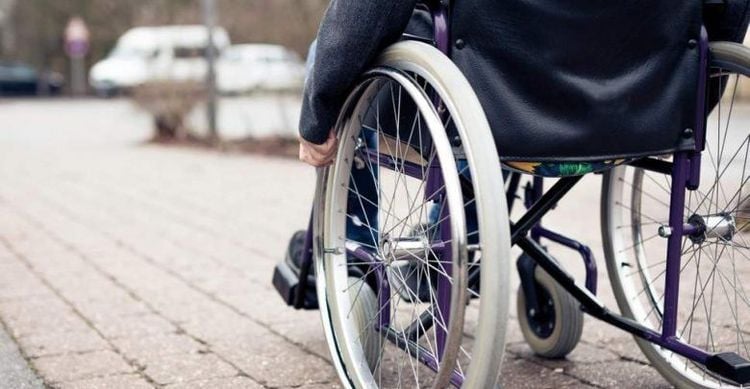
Liệt chi dưới xảy ra với phần chi dưới, từ eo trở xuống, gồm chân, hông và cả những chức năng như sinh lí và bài tiết
Quadriplegia sometimes occurs only temporarily after a person has suffered a brain injury or stroke, and the body naturally regains some function during the recovery process. However, most patients have to undergo intensive and intense physical therapy treatment. Similar to lower extremity paralysis, the leading cause of quadriplegia is sports injuries such as soccer, traffic accidents, and fights.
Paralysis can occur in a multitude of different ways, and each patient will respond and respond to treatment somewhat differently, which is why paralysis is classified into different types, so each person Patients can receive the right patient-centered medical care, as well as being fully aware of their condition, treatment modality, and prognosis.
2. Symptoms and danger signs
2.1 Symptoms Spinal cord injury of any kind may have one or more of the following signs and symptoms:Loss of mobility Loss of sensation or paresthesias, including sensations of hot, cold and Touch Loss of bowel or bladder control Excessive reflex activities or spasms Severe pain or sharp pain caused by damage to nerve fibers in your spinal cord Difficulty breathing, coughing, or spitting up secretions from the lungs 2.1 .1 Danger signs Urgent signs and symptoms of spinal cord injury after an accident may include:
Back pain or a heavy feeling in the neck, head or back Weakness, confusion or paralysis in any part of your body Numbness, tingling sensation or loss of sensation in your hands, fingers, feet or toes Loss of bowel or bladder control Difficulty balancing and walking Difficulty breathing after an accident Neck or back is twisted or has an abnormal posture
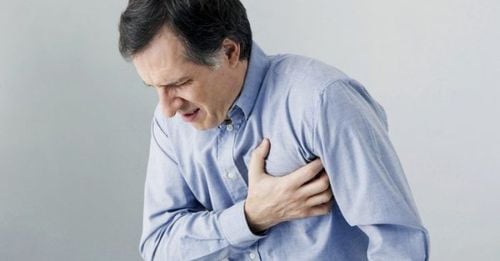
Khó thở sau tai nạn là dấu hiệu nguy hiểm của tổn thương tủy sống
3. Diagnosis of paralysis
Diagnosing whether a patient is paralyzed or not is not difficult, especially when the signs of loss of muscle function are easy to recognize. But for internal organs where it is difficult to locate the paralysis, the doctor can use imaging methods such as X-ray, CT scan, MRI and others to aid in the diagnosis.In the diagnosis of spinal cord injury, the doctor may order a contrast X-ray to evaluate the lesion. To do this, the medical staff will pass a contrast dye into the spinal nerves to see the nerve more clearly on the X-ray film. In addition, an electromyography test is also ordered to check the electrical activity of the muscles through the sensors.
4. Methods of treatment
The treatment plan depends on the cause of the paralysis as well as the patient's symptoms. Treatments include:Surgery or amputation Physical therapy Occupational therapy Use of mobility aids such as wheelchairs, splints, trams and other devices Internal medicine, such as Botox or muscle relaxants if you have spastic paralysis In many cases, recovery is not possible, but our doctors can recommend a variety of treatments, assistive devices and how to control symptoms for the patient.
5. What hope for paralyzed patients?
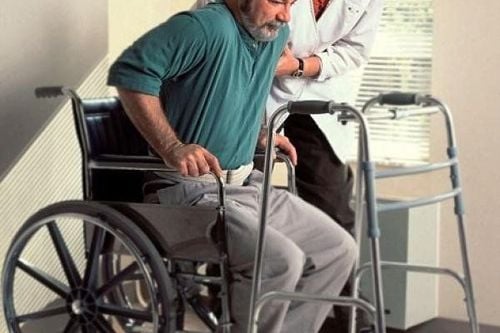
Người bệnh cũng nên thay đổi lối sống, dùng thuốc, phẫu thuật hoặc các phương pháp điều trị khác để giúp kiểm soát các biến chứng tiềm ẩn
Patients should also make lifestyle changes, medications, surgery, or other treatments to help manage potential complications, as directed by their specialist.
If you are looking for treatment for yourself or a loved one, see a specialist right away to receive information about your specific diagnosis, treatment plan, and outlook for treatment outcomes.
Unit of Regenerative Medicine Clinic and Educational Psychology of Center for Regenerative Medicine, Vinmec Times City International General Hospital is one of the prestigious addresses in the field of rehabilitation exercises for injured patients. spinal cord injury, meningeal hernia, children with cerebral palsy...
Besides using modern rehabilitation machines, the Department of Regenerative Medicine Clinic and Educational Psychology also has a team of specialists rehabilitation specialists to help patients get the most out of their ability to function, combined with anti-ulcer care, use of mobility aids (wheelchairs), position changes , overcome the loss of feeling of defecation...
Please dial HOTLINE for more information or register for an appointment HERE. Download MyVinmec app to make appointments faster and to manage your bookings easily.
Articles refer to sources: webmd.com, healthline.com, mayoclinic.org




